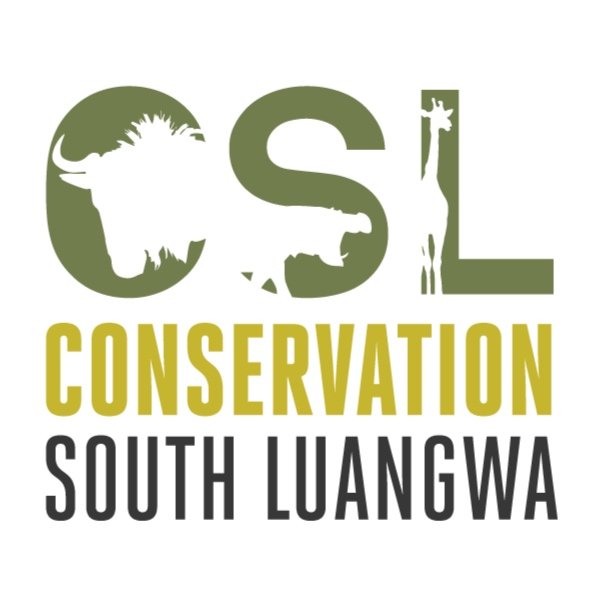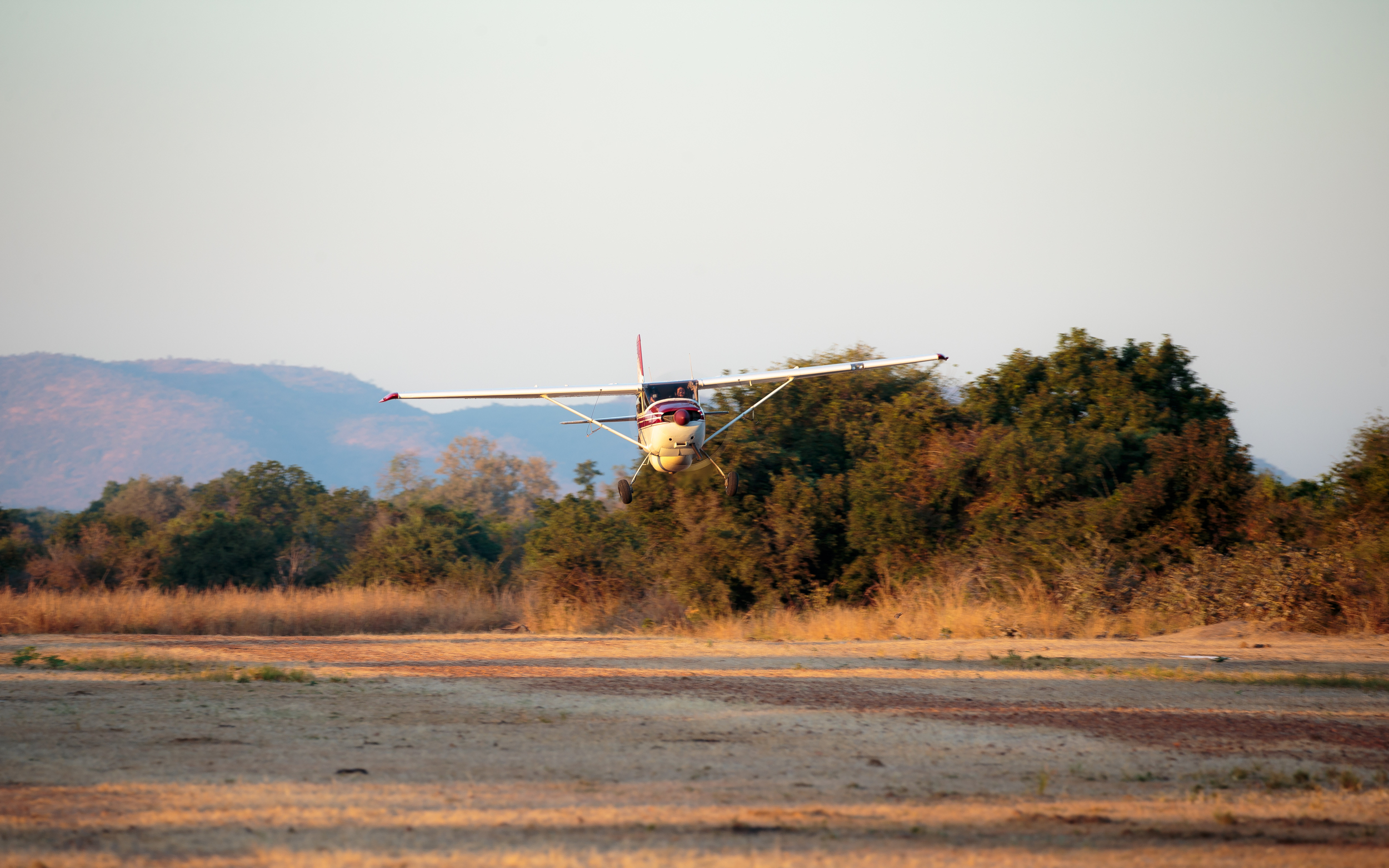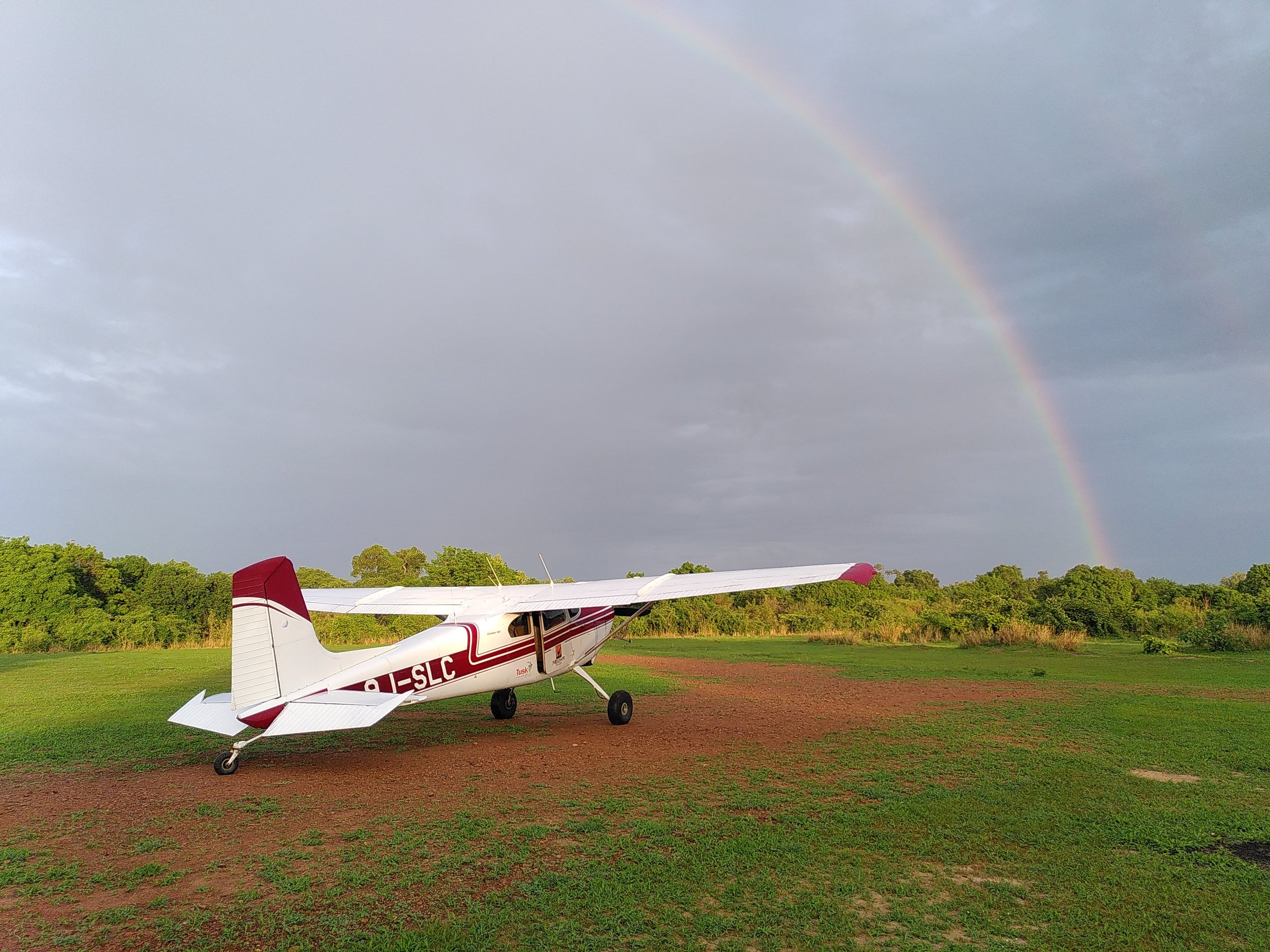The Aerial Unit has evolved to become a significant contributor in safeguarding the South Luangwa ecosystem, contributing to anti-poaching law enforcement, research and monitoring. Other activities include mapping water points for patrol teams, assisting the Human-Wildlife Coexistence team in monitoring and planning crop damage mitigation measures, and flying with local chiefs to enhance their understanding of CSL’s conservation efforts. Both the fixed-wing light aircraft and helicopter provide a deterrence to potential poachers by providing a consistent presence along the Park boundaries and around sensitive areas.
Fixed-wing light aircraft
CSL’s fixed-wing Cessna 180 aircraft plays a crucial role in supporting law enforcement through aerial surveillance operations, while also contributing to the Zambian Carnivore Programme’s large carnivore research via aerial tracking operations. The team collects valuable intelligence data, identifying carcass locations, areas of deforestation, illegal fires, as well as poachers’ camps and bushmeat drying racks. The aircraft provides real-time intelligence to ground responders to incidents of gunshots.
As a mode of transport, the aircraft also enables effective resource management. During the dry season, the aircraft enables patrols to be completed in a fraction of the time it would take the ground-based team. In the wet season, it becomes essential for surveillance where ground access is limited. Furthermore, the nature of flying means that the CSL-ZCP Veterinarian, Dr Mwamba Sichande, can attend to de-snaring needs in more remote areas without the need for extensive days travelling across remote areas.
Helicopter support
The helicopter provides rapid deployment of the ground patrol teams in responding to illegal activities within the South Luangwa National Park and surrounding game management areas, in particular the Quick Reaction Force teams. The helicopter provides a morale boost for teams on the ground, particularly those based in remote scout camps that can be inaccessible by road during the rainy season.





































